Disclosure: Meeple Mountain received a free copy of this product in exchange for an honest, unbiased review. This review is not intended to be an endorsement.
When was the last time you really thought about all that goes into making a nice hot cup of coffee…and no, I don’t just mean your effort to grind the beans or heat the water. In Coffee Roaster you’ll first roast your beans before brewing that perfect cup of liquid energy with (hopefully) all the right flavour notes.
Coffee Roaster is a bag-building game with a push-your-luck element that is a strictly solo experience. The game is played over two phases: Roasting and Cup-testing. During the Roasting phase, you build your bag by doing things like increasing the roasting temperature, roasting beans, adding flavour notes, and removing negative elements — like smoke, defective beans, and moisture — that could taint your cup of joe. You’ll continue to perform the steps of the Roasting phase until you are satisfied with the bag of tokens you’ve accumulated — and are confident in your ability to brew the most delightful (high-scoring) cup of coffee. At that point, you move into the Cup-testing phase where you draw ingredients from your bag to “brew” a cup of coffee and see how well you’ve scored.
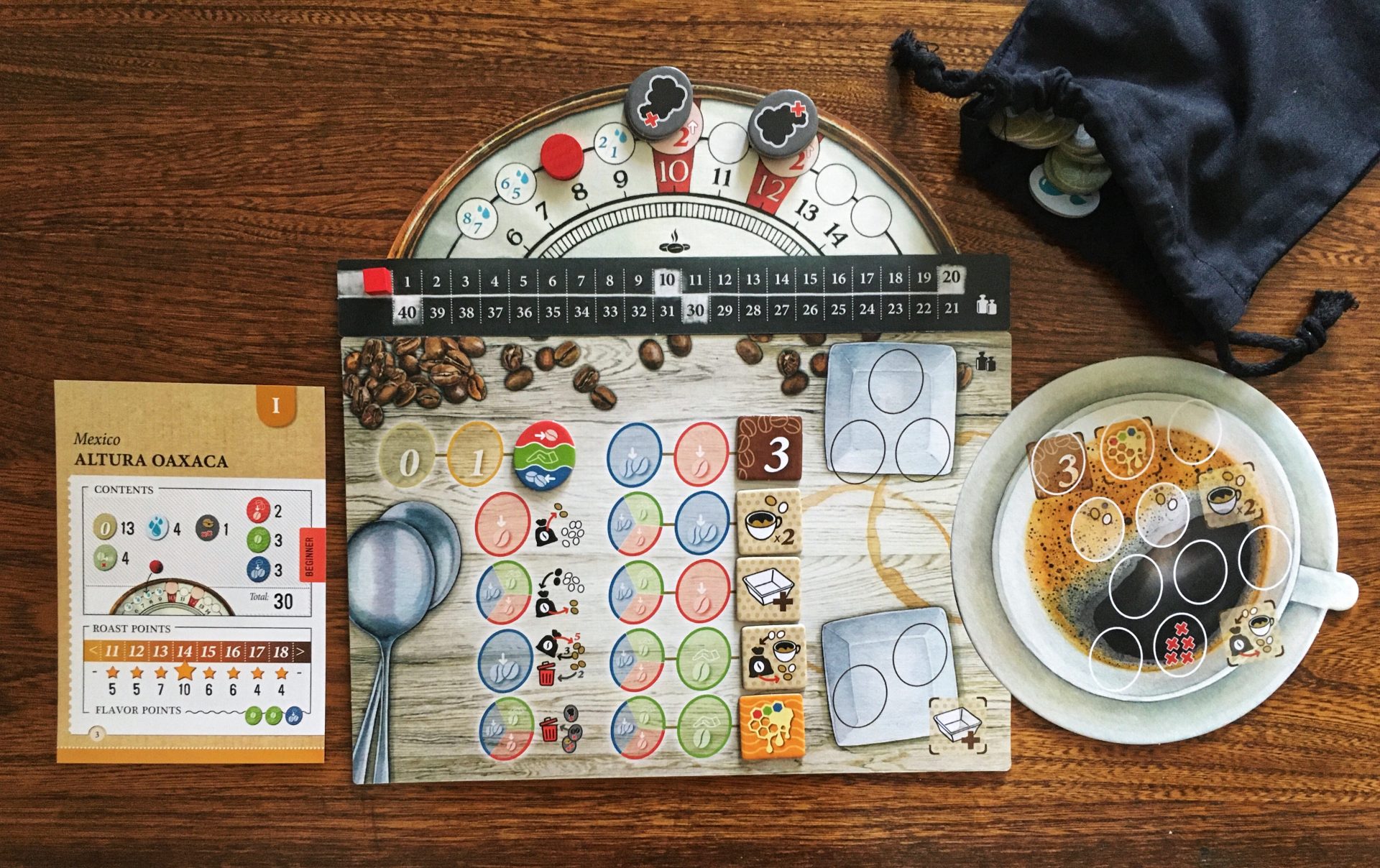
Let’s now take a look at each of the phases in more detail.
Roasting Phase
During the Roasting phase, you work to improve your bag and get it ready to score points in the second phase. Roasting can last up to nine rounds, but you have the power to play fewer rounds if you think you’re ready to move to the next phase. Each round in the Roasting phase consists of six steps: Increase Temperature, Draw Tokens, Remove Moisture, Use Flavour Tokens, Roast, and Decision Time.
Increase Temperature
The circular red Game Round marker moves one space forward (except in the first round). The position of this marker indicates how many tokens you’ll draw in the next step, whether Smoke tokens are added to your bag, and how many levels your beans will increase — typically one unless the marker is on a red space.
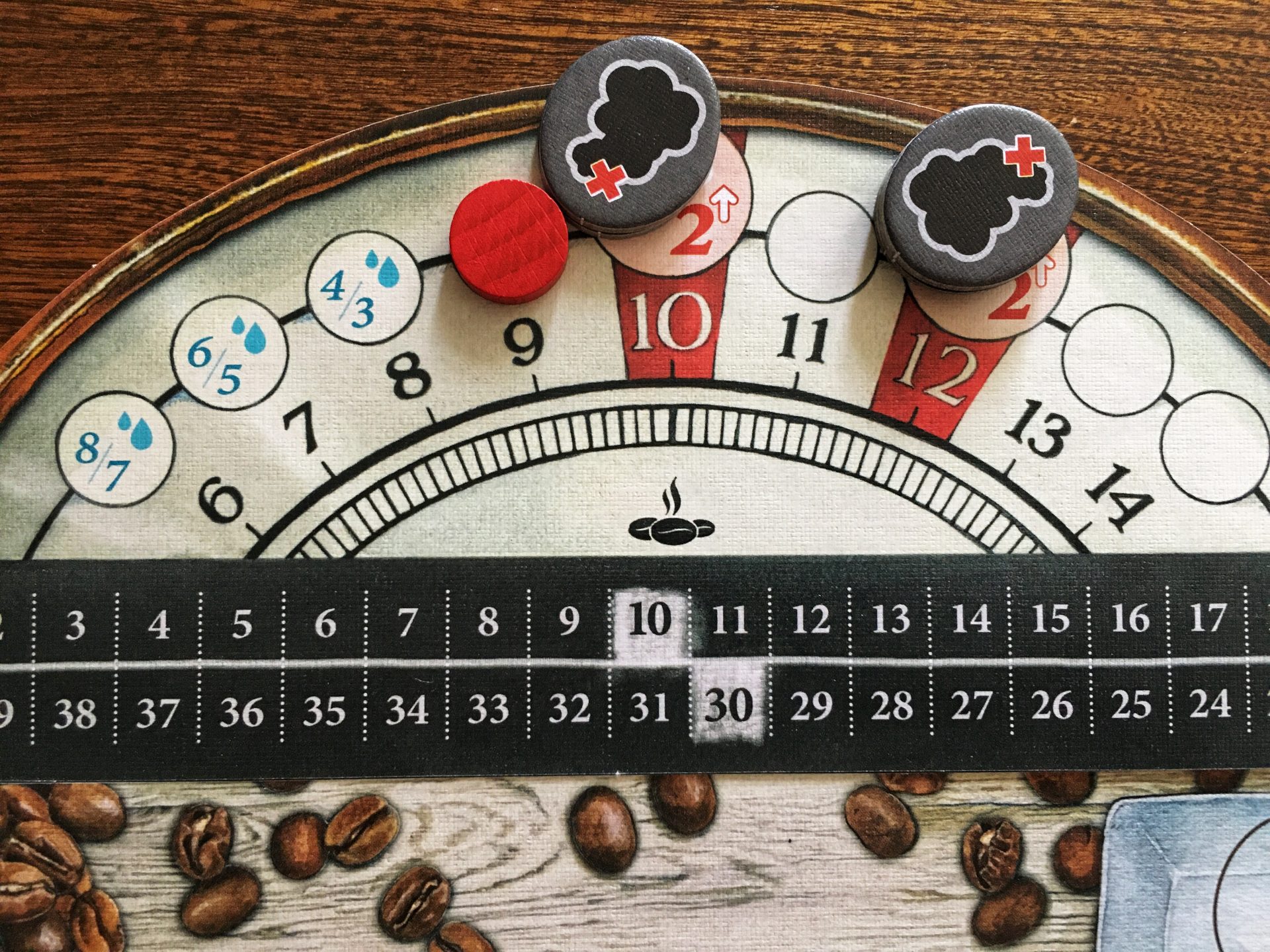
Draw Tokens and Remove Moisture
Begin by drawing a number of tokens from your bag as indicated underneath the Game Round marker. Be sure not to peek in your bag when doing so…it’s forbidden to do so throughout the game. Any Moisture tokens drawn are then discarded back to the box (or onto the Coffee card to help you keep track of the contents of your bag).

Use Flavour Tokens
This step involves some of the grittiest choices you’ll make in Coffee Roaster. Flavour tokens (red, blue, and green which represent body, aroma, and acidity respectively) can be used to activate immediate effects printed on the game board or to trigger the token’s own effect, which then works up to a cup effect (a bonus for the next phase). However, some coffee blends also require Flavour tokens in the next phase to score points. Knowing when to use Flavour tokens and when to spend them is part of Coffee Roaster’s challenge.

There is no limit to the amount of Flavour tokens you can spend on your turn (for immediate and/or cup effects), but each effect space can only hold one Flavour token, which remains in place until the end of the game.
Immediate effects let you manipulate your bag’s components or the tokens you draw that round in some way (adding more, exchanging, or discarding, for instance). Cup effects are more complicated — like pour-over coffee brewing. When triggering a cup effect you’ll use both the Flavour token’s ability and also work up to unlocking a cup effect. Each Flavour token has a built-in ability.
- Red (body) lets you combine two of your drawn Bean tokens into one (for example, two 1s would make one 2).
- Blue (aroma) is the opposite of the red tokens and lets you deconstruct one Bean into two (for instance, one 3 becomes one 2 and one 1).
- Green (acidity) allows you to put exactly two Bean tokens back into your bag before the roasting step. (The reason you might want to do this will become clear soon.)
The used Flavour token is then placed on one of the matching cup effect spaces. To unlock a Cup Effect token, both spaces need to be occupied.
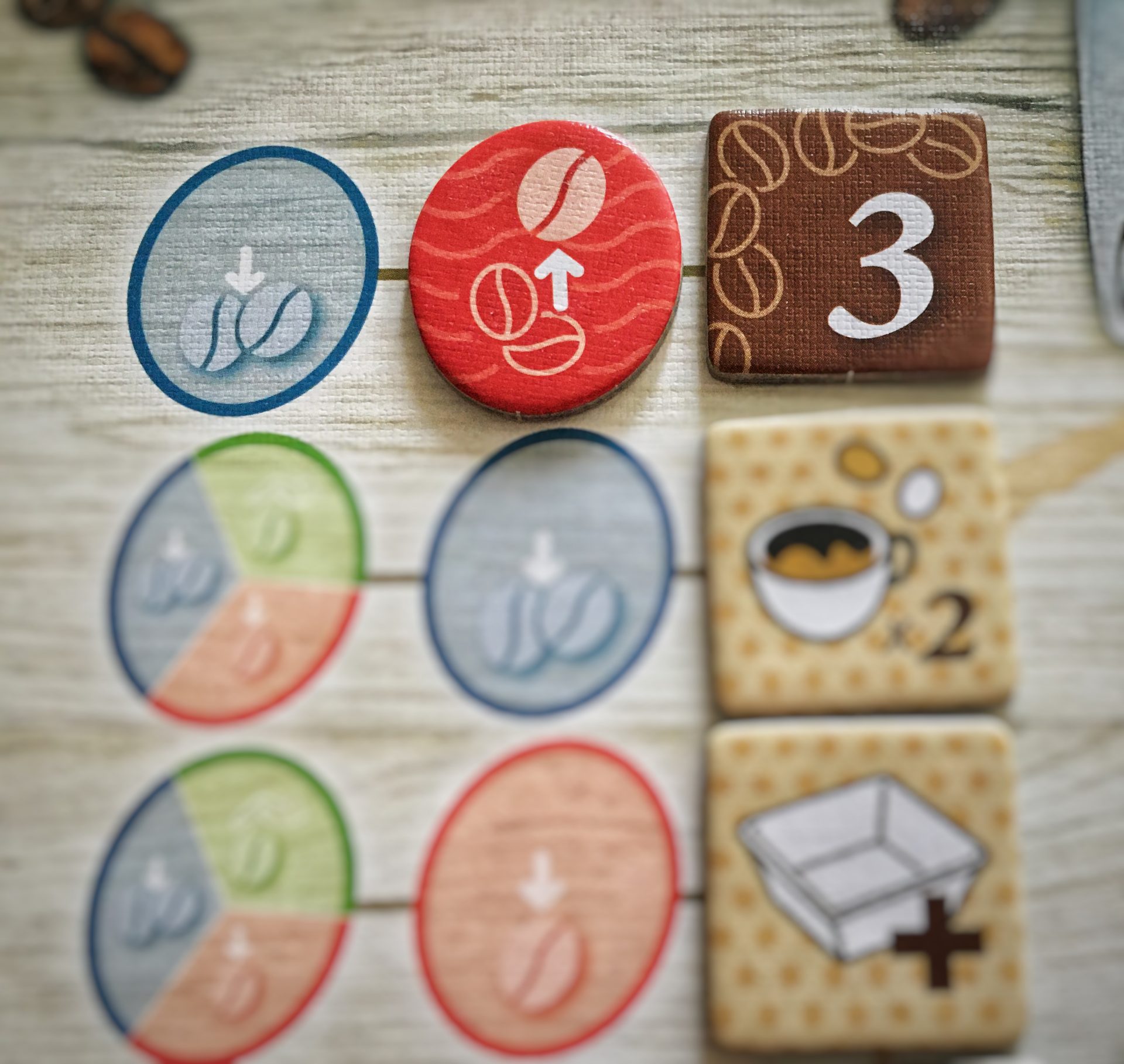
The Cup Effect tokens grant some kind of bonus ability in the second phase, Cup testing, so I’ll wait until that section to detail their effects.
Any Flavour tokens you choose not to spend go back in your bag at the end of the round.
There is one final bonus space that you can activate to gain a “wild” Flavour token by using a 0 and a 1 Bean token from the tokens you’ve drawn.
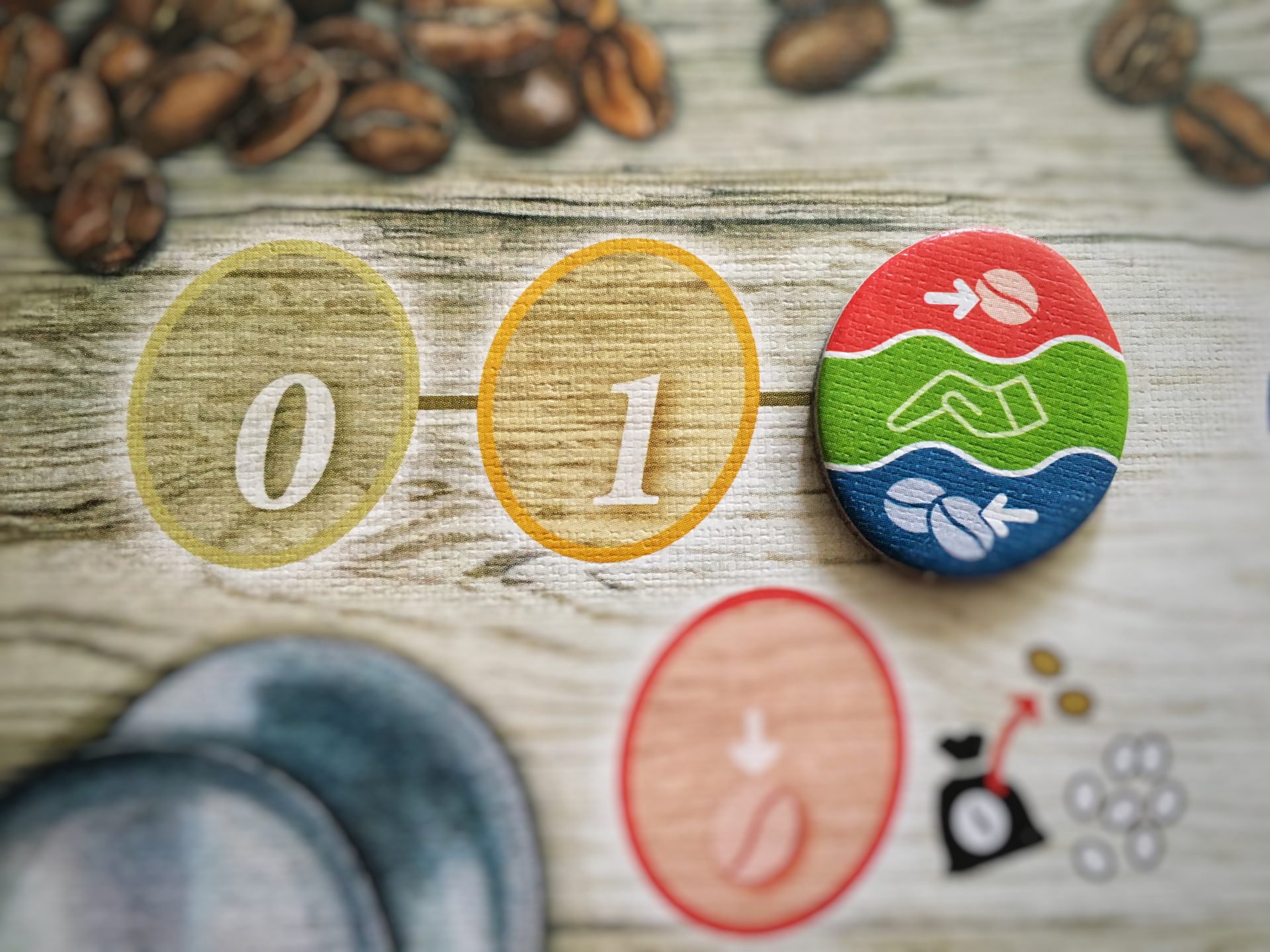
Roast
During this step any Bean tokens you’ve drawn from your bag this round increase by one or two levels. The highest roast level is 4 so if any beans were to exceed that level, those beans are burned and could lose you points in the next phase. (This is why you may want to use a green Flavour token.)
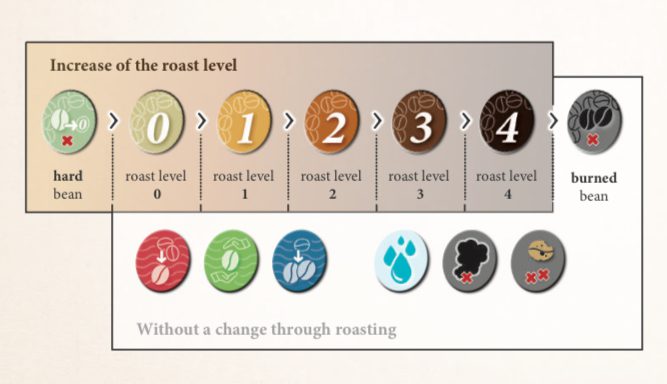
When you increase the level of a Bean token, return it to the box and replace it with the new Bean token, adding it to your bag.

For each level you roasted your beans, you’ll want to move the square Roast Counter marker forward. This doesn’t affect gameplay, but it will help you keep track of the combined roast level of Bean tokens in your bag — because remember you’re not allowed to look in to check.

Finally return all remaining unused tokens to your bag and proceed to the next step.
Decision Time
Here you must decide whether to play another round of the Roasting phase, repeating all six steps, or stop and proceed to the Cup-testing phase. You may want to continue building your bag in the Roasting phase because your roast level is too low or you might want to unlock more Cup Effect tokens or use Flavour token abilities. However, the longer you play in the Roasting phase, the more you risk negative consequences — Smoke tokens added to your bag and burning your beans. It’s a tough decision to make and the timing will change from game-to-game depending on the luck of your draws and how you use Flavour tokens. Of course, if the Game Round marker is on the last space then the game has made the decision for you and you must proceed to Cup-testing.
Cup-testing Phase
Now is the time to prove your expert barista skills by brewing the perfect cup of coffee. This phase begins with you drawing one token from your bag and deciding whether to add it to your Cup (to score later) or to the tray (a discard area with limited space). You only have at most ten spaces in your Cup for the tokens you need so it’s important to choose carefully. Continue this drawing and decision-making process until all the spaces in the Cup are filled or your bag is empty. Before I explain scoring, let’s take a look at the Cup Effect token abilities.

The Sweetness token (A) occupies its designated Cup space if you’ve unlocked it — if you haven’t, any regularly drawn token goes on that space. Some coffees require this token, but it can also work as a wild Flavour token. The 3 Cup Effect token (B) is like a 3 Bean token and occupies the first space in your Cup if it’s unlocked (otherwise any drawn token goes on the space). The Cardboard Tray (C) unlocks a second tray for you to use as a discard. The Exchange token (D) gives you more power to mitigate the luck of the draw during the Cup-testing and the Selection token (E) grants you the ability to “draw two, keep one” on the two labeled Cup spaces.
Scoring Your Cup
The exact scoring conditions for your Cup depend on which Coffee card you are using (representing the specific type of coffee you’re brewing), but you’ll always be assessed on your roast points, flavour points, and skill points.
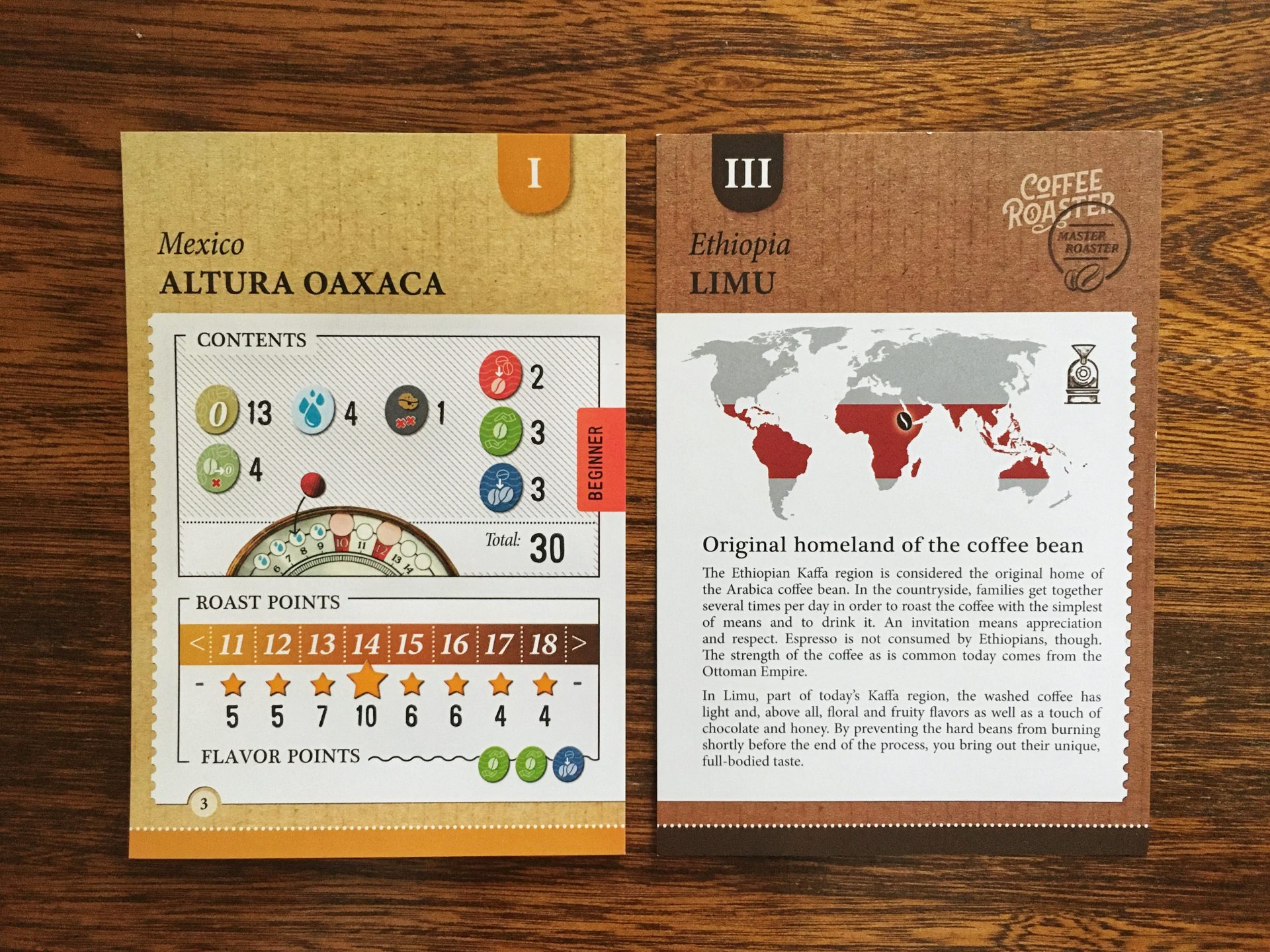
To determine your roast points, add up the value of Bean tokens in your Cup and compare the total to the roast level on the Coffee card. Then score points for how well you match the required Flavour tokens shown on the bottom right of the Coffee card — remembering that a wild or the Sweetness token can replace any Flavour token. Next you score skill points for three or more Bean tokens with the same roast level. Finally lose points if you have no Flavour tokens in your Cup, if you didn’t fill all ten Cup spaces, and for every token with a red X (i.e., Burned Beans, Smoke) in your Cup.
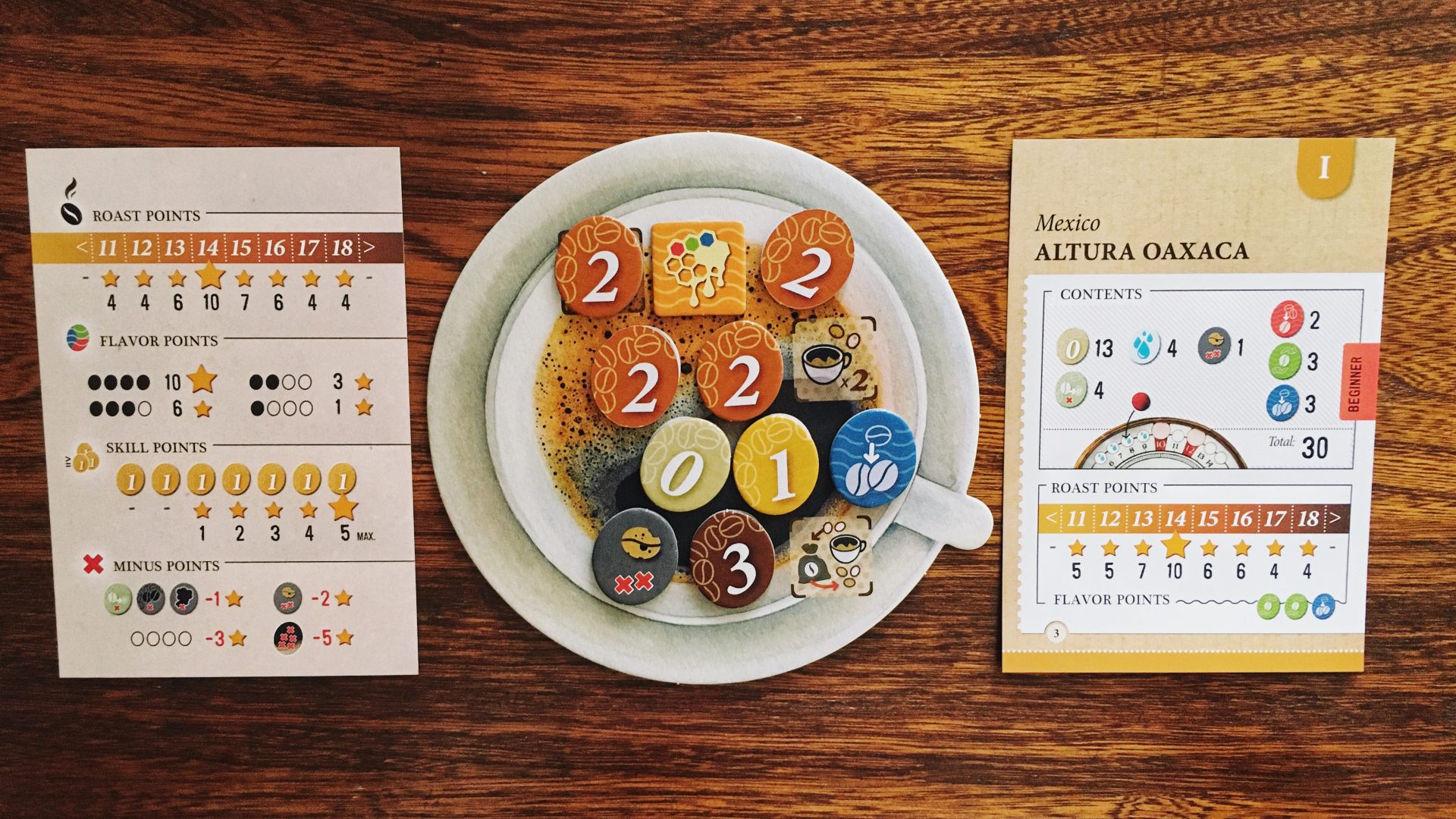
Final Thoughts
I, like many other reviewers, didn’t quite grasp the feel of the game when I first read through the Coffee Roaster rulebook. The rules aren’t to blame for this; it’s hard to translate the game’s energy into words, which is a real shame because once you get into it, Coffee Roaster is a fun challenge. I get a similar feeling when I play it as I do when I play the multiplayer game The Quacks of Quedlinburg. All the bag-building, push-your-luck thrills, excitement, and tension are present in both (and so is the annoyance you feel when the luck of the draw bites you and you have a suboptimal turn).
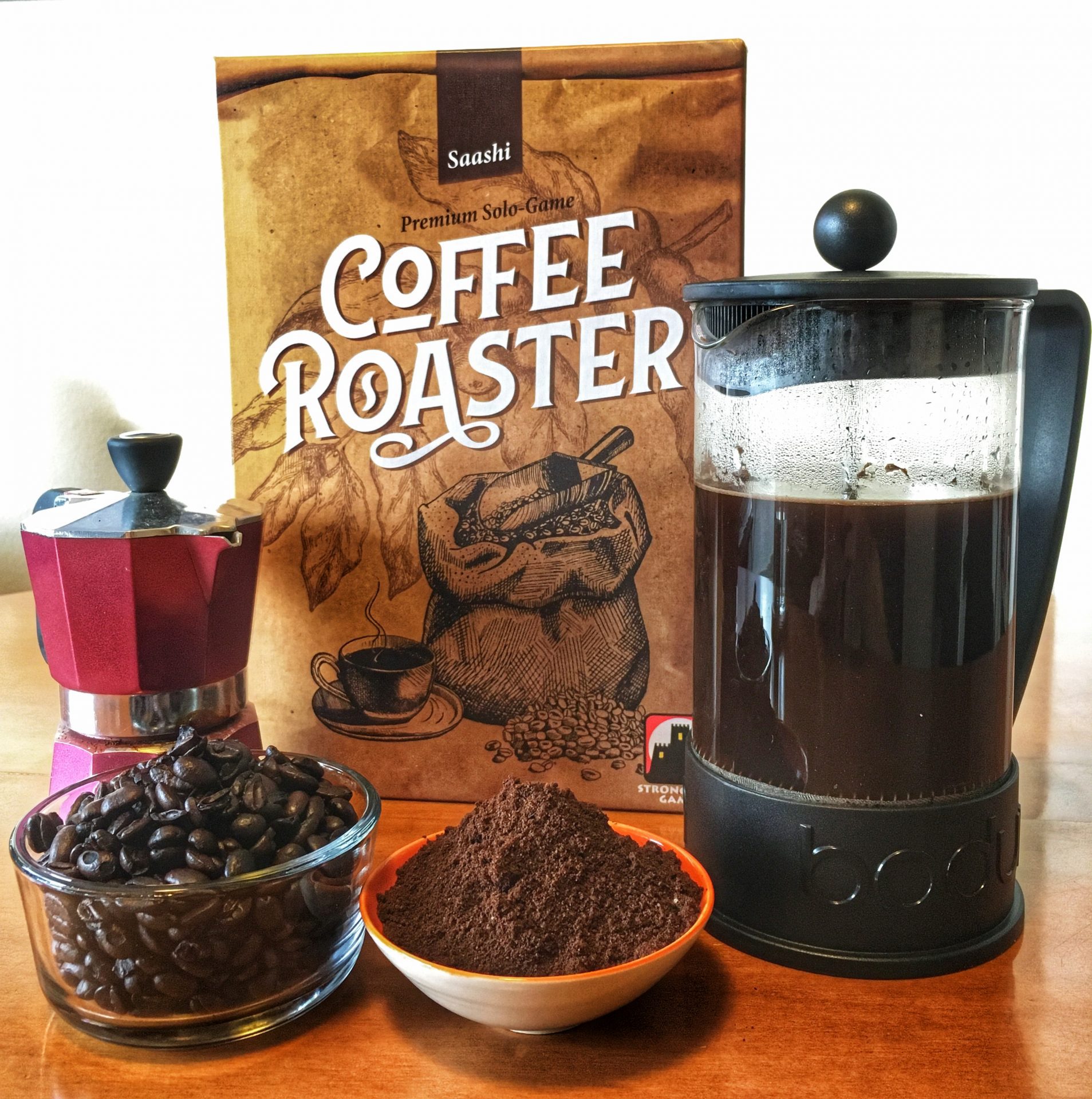
Like many solo gamers, I almost shelled out $90 to get Coffee Roaster’s original printing imported to North America without playing or knowing much about its gameplay. Then Stronghold Games picked it up and, for the most part, the rules and gameplay are true to the original Saashi & Saashi version of the game (except for the Flavour token stacking rule which is no longer included). The Stronghold Games version is almost perfect; while I like the elegant and modern artwork, I miss Takako Takarai’s original art and the vibrancy it always gives Saashi’s designs.
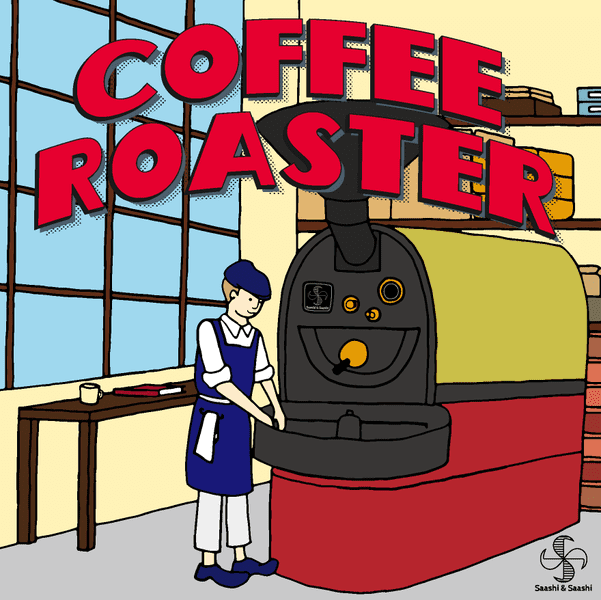
What I appreciate most about Coffee Roaster is just how challenging it is for such simple mechanisms. It’s astonishing to me how poorly I do every time I play this game — and that’s coming from someone who is pretty good at deck/bag-building games. (I defeated Lord Voldemort after all.)
If you’re going to invest in a solo-only game, you want to be sure that there will be enough variability in your games and that the game’s interesting and hard enough to not bore you after a handful of plays. In all these respects, I think Coffee Roaster succeeds. The only critique I have is one that I think is true for most deck- and bag-building games: some turns, especially early on in the game, might not be as exciting or satisfying because of a poor draw (for example, if you don’t draw any Flavour tokens).

Coffee Roaster is a great bag-building, push-your-luck game. If you’re a fan of those mechanisms and want a solid solo challenge, be sure to check out Coffee Roaster.
Thematic Music for Playing Coffee Roaster
Lianne La Havas by Lianne La Havas
Songs to check out include: Can’t Fight, Paper Thin, Weird Fishes, and Seven Times.
More on Lianne La Havas: https://www.liannelahavas.com/
Zaz by Zaz
Songs to check out include: Les passants, Le long de la route, and Port Coton.
More on Zaz: https://www.zazofficial.com/en#bio
Jaime by Brittany Howard
Songs to check out include: History Repeats, 13th Century Metal, Baby, and Presence.
More on Brittany Howard: https://brittanyhoward.com/news/


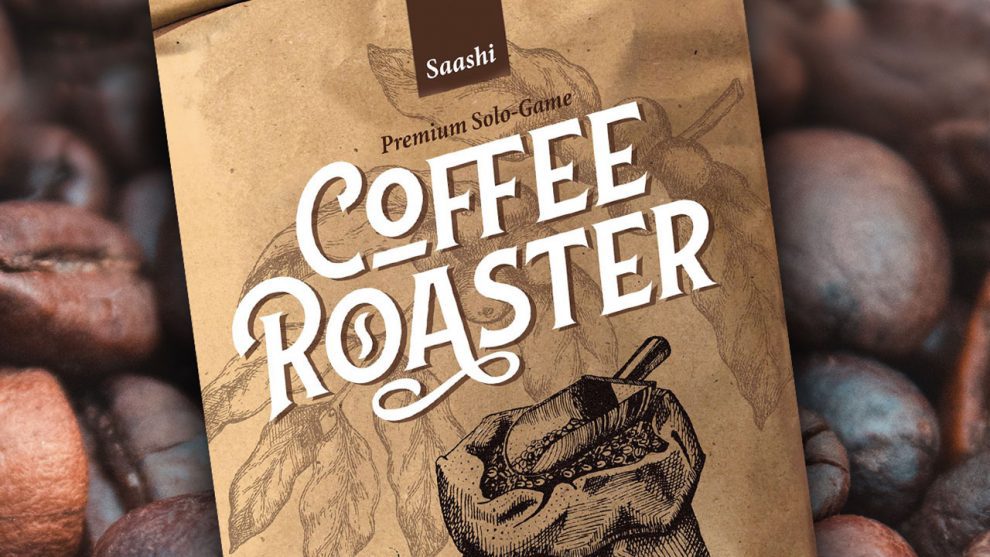


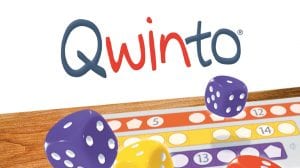
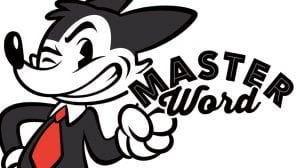
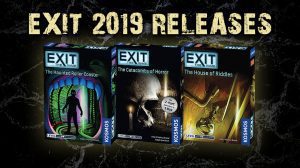




Add Comment